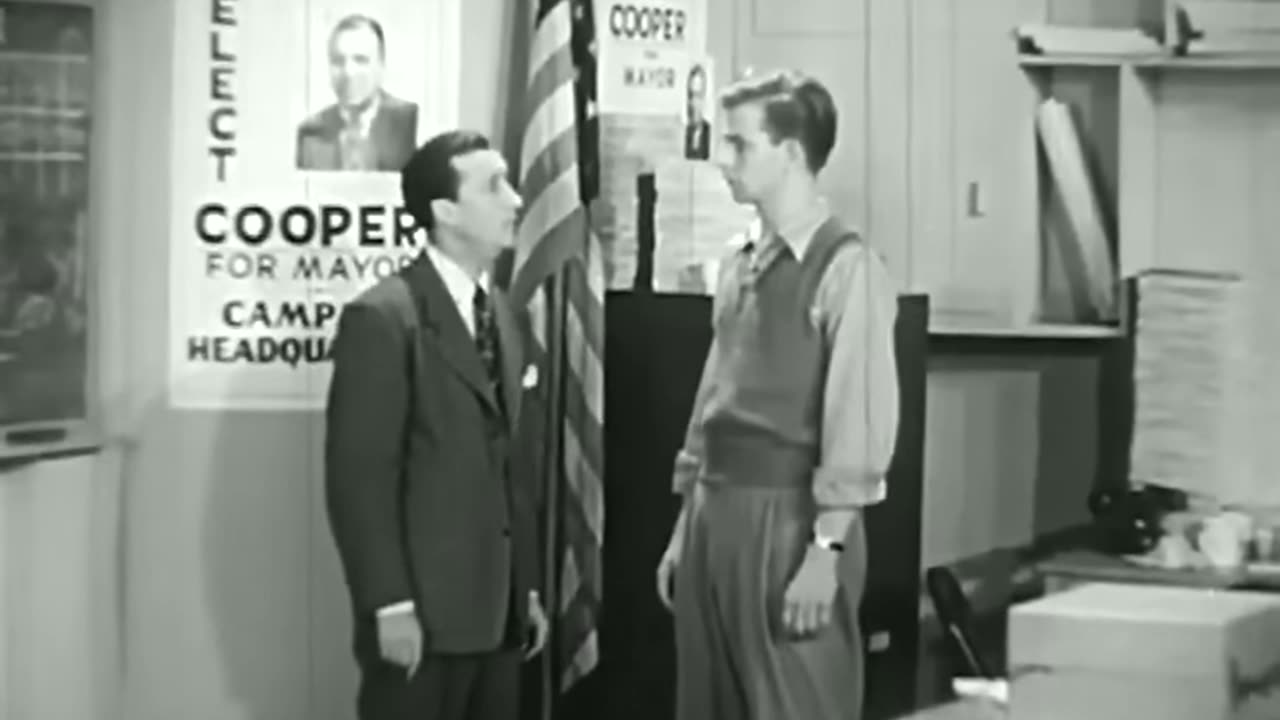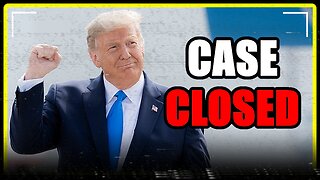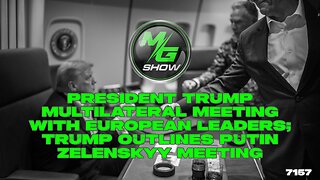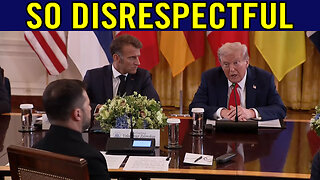Premium Only Content

PROPAGANDA - They Showed This To High School Kids In 1948! Would They Allow This Today?
This film was made to sell to high school media departments who purchased it to show to their juniors and seniors. Students in public high schools were being exposed to the concept of propaganda, especially given the context of World War II and the early Cold War. At this time there was an emphasis on educating citizens, including school children, about the role of propaganda. Would anyone make a film like this to run in schools involving media fake media or not?
Propaganda from all sides was studied including in history or social studies classes. Teachers used examples from Nazi Germany, Fascist Italy or Imperial Japan to illustrate how propaganda was used to control information and manipulate public opinion during the war.
In civics or government classes, students discussed propaganda in the context of democratic values, freedom of speech and the role of the press. This included conversations about the differences between propaganda, misinformation, and the free exchange of ideas.
In English or other language arts classes propaganda was discussed as a form of rhetoric or persuasion.
The early stages of the Cold War and the 1948 presidential election were events for discussion in classrooms. Teachers used these current events to talk about the role of propaganda in politics and international relations.
High school clubs and other extracurricular activities focused on debate, journalism and politics.
Many Americans were well aware of political propaganda in 1948.
Political Campaigns: Many people recognized the use of slogans, posters, and speeches during political campaigns as forms of persuasion, if not always identifying these tactics explicitly as "propaganda."
Given the early stages of the Cold War, Americans were being exposed to constant anti-communist messaging from the government and media. Some saw this as propaganda, though others saw it as necessary information or patriotic messaging.
Newspapers, radio broadcasts, and the then relatively new medium of television would were sources of both overt and subtle propaganda. Some media outlets criticized propaganda efforts, thereby making their audiences more aware of them.
The mid-20th century was also a time when public relations and advertising were growing and becoming more sophisticated. Some people recognized that these industries used similar tactics to those found in political propaganda.
The year 1948 was especially filled with political propaganda with the presidential election and internationally with the ongoing Cold War.
In 1948 President Harry S. Truman was running for re-election against Thomas E. Dewey. The now-famous "Dewey Defeats Truman" headline from the Chicago Daily Tribune was an example of premature victory claim due to inaccurate polling data which could be seen as a form of propaganda, trying to shape the narrative before the election was even over. Truman's own campaign used the slogan "Give 'Em Hell, Harry!" to rally the working-class vote and present Truman as a straightforward, no-nonsense candidate.
In the context of the early Cold War, both the United States & the Soviet Union used propaganda extensively to promote their respective ideologies and to denigrate the other. In the US, fear of communism was ramped up with government-sponsored propaganda, including films like "Red Nightmare" warning about the supposed dangers of communism. The government also produced numerous posters & leaflets depicting the Soviet Union as a menacing, totalitarian state that threatened American freedom.
With the establishment of Israel in 1948, there was significant propaganda on both sides of the conflict. Arab nations spread messages depicting the newly formed state of Israel as a colonial imposition, exploiting religious sentiments & framing it as a battle against Zionism. Conversely, Israeli propaganda emphasized the need for a Jewish homeland after the horrors of the Holocaust & cast their struggle as one of survival against hostile neighbors.
In 1948-1949, when the Soviet Union blocked access to West Berlin, the U.S., U.K., & their allies organized an airlift to supply the city with food, fuel, and other necessities. This event was accompanied by extensive propaganda on both sides. The West highlighted it as a humanitarian mission & an example of democratic nations stepping in to help those in need, while the Soviets depicted it as an aggressive act & an attempt to exert control over Berlin.
Organizations & companies advertise on this video clip. It is interesting to see what they are using this for. Search the words Disinformation. Public relations in business. Political advocacy. Political campaign. Public relations consulting firms. Healthcare agency. PR consultant. Best public relations. Media public relations. Political action committee.
-
 25:57
25:57
DeVory Darkins
1 day ago $12.57 earnedNewsom suffers HUMILIATING SETBACK after FATAL Accident as Trump leads HISTORIC meeting
30.2K126 -
 LIVE
LIVE
FyrBorne
11 hours ago🔴Warzone M&K Sniping: First Impressions of Black Ops 7 Reveal
276 watching -
 8:16
8:16
MattMorseTV
17 hours ago $8.42 earnedTrump’s name just got CLEARED.
70.8K74 -
 2:01:55
2:01:55
MG Show
21 hours agoPresident Trump Multilateral Meeting with European Leaders; Trump Outlines Putin Zelenskyy Meeting
25K19 -
 LIVE
LIVE
DoldrumDan
2 hours agoCHALLENGE RUNNER BOUT DONE WITH ELDEN RING NIGHTREIGN STORY MODE HUGE GAMING
81 watching -
 10:59
10:59
itsSeanDaniel
1 day agoEuropean Leaders INSTANTLY REGRET Disrespecting Trump
19.6K16 -
 16:43
16:43
GritsGG
17 hours agoThey Buffed This AR & It Slaps! Warzone Loadout!
18.1K1 -
 2:05:30
2:05:30
Side Scrollers Podcast
21 hours agoEveryone Hates MrBeast + FBI Spends $140k on Pokemon + All Todays News | Side Scrollers Live
114K12 -
 11:06
11:06
The Pascal Show
15 hours ago $1.47 earned'THEY'RE GETTING DEATH THREATS!' Jake Haro's Lawyer Breaks Silence On Emmanuel Haro's Disappearance!
18.6K2 -
 LIVE
LIVE
Lofi Girl
2 years agoSynthwave Radio 🌌 - beats to chill/game to
300 watching